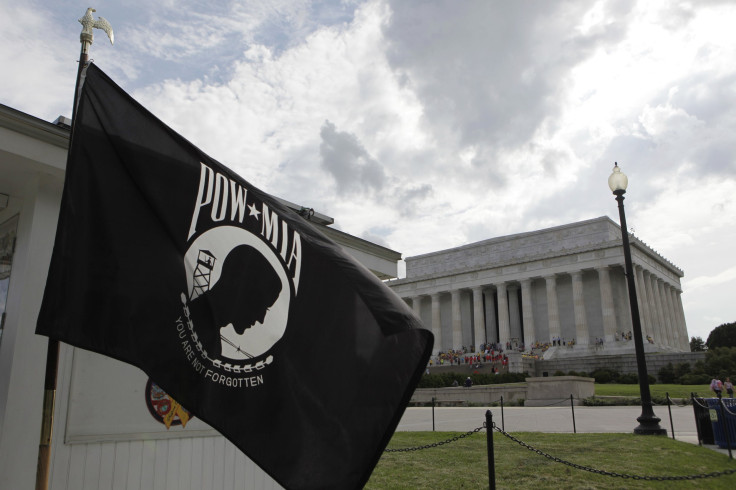National POW/MIA Recognition Day 2016: What Is The History Of The Flag?

Friday is National POW/MIA Recognition Day, honoring the U.S. military's soldiers who were or are prisoners of war (POW) or designated missing in action (MIA).
No symbol better commemorates the sacrifice POW/MIA veterans have made for the country than the famous POW/MIA flag. But many Americans might not know the history behind the iconic flag.
The POW/MIA flag was designed during the Vietnam War as a symbol of national concern about U.S. military personnel taken as prisoners of war or listed as missing in action, according to the National League of POW/MIA families. In 1970, Michael Hoff, the wife of a soldier listed as missing in action in the Vietnam War and a member of the National League of POW/MIA Families wanted to create a symbol to honor her husband and other POW/MIA veterans. Hoff reached out to Norman Rivkees, the vice president of Annin & Company, which had recently made a banner for the the People’s Republic of China to commemorate their entry into the United Nations. Rivkees was sympathetic to Hoff's cause and arranged for her to design the flag with Newt Heisley, one of Annin's advertising agency's employees.
The National League of POW/MIA Families' Board of Directors held a meeting in January 1972 to approve the POW/MIA flag and began manufacturing the banner for distribution shortly after. Since the league wanted the flag to receive as much exposure as possible it did not seek a trademark or copyright for the image, allowing anyone to reproduce the image and spread awareness about the families of POW/MIA veterans.
That was much needed during the Vietnam War, where the U.S. lists 1,350 Americans as having been prisoners of war, including Arizona Sen. John McCain, or designated missing in action. In the United States' conflicts in Iraq and Afghanistan since 1991, 12 soldiers have been designated as prisoners of war, including Sgt. Bowe R. Bergdahl, while just one, Navy pilot Lt. Cmdr. Michael Scott Speicher, was declared MIA. Speicher's remains were later found at his plane's crash site after a tip from an Iraqi civilian.
© Copyright IBTimes 2025. All rights reserved.






















